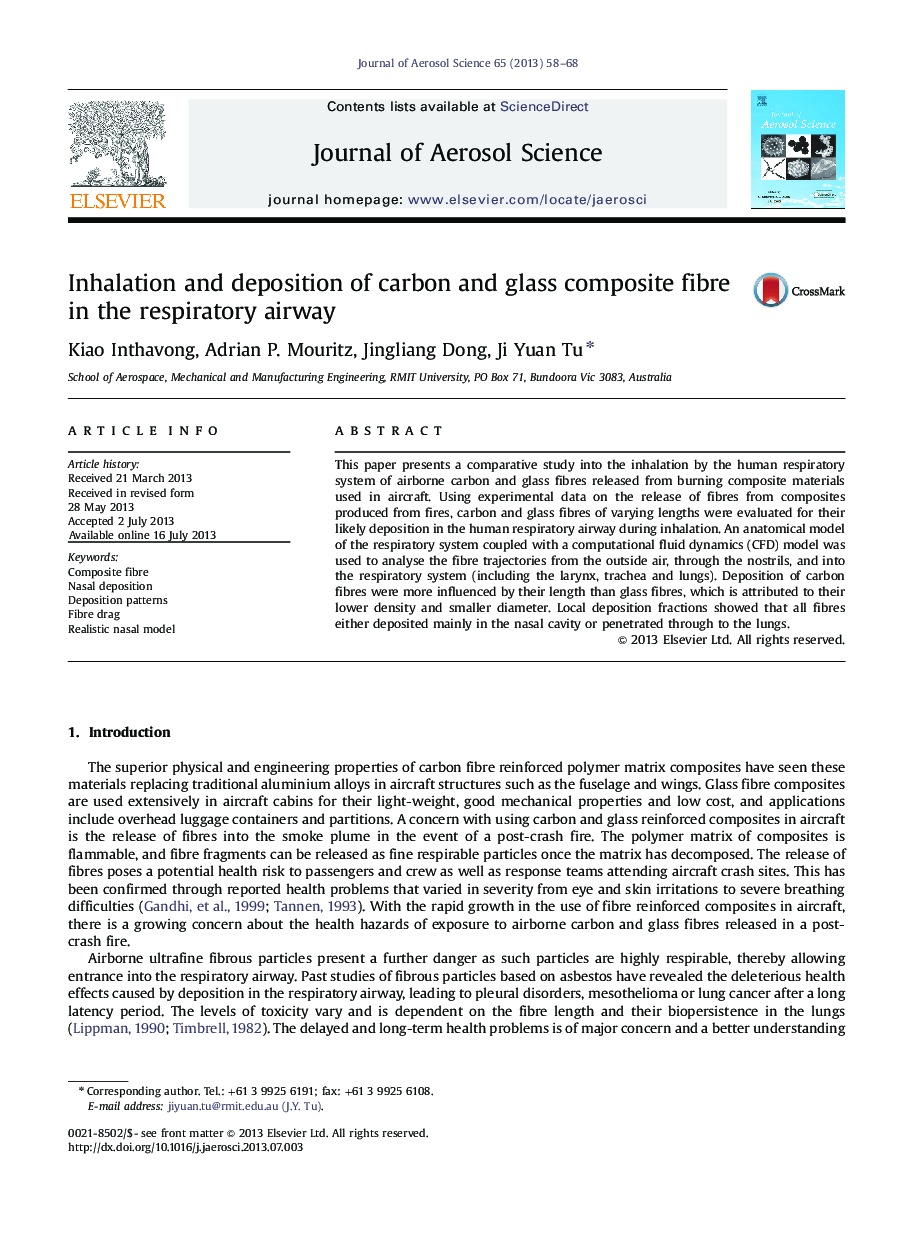| کد مقاله | کد نشریه | سال انتشار | مقاله انگلیسی | نسخه تمام متن |
|---|---|---|---|---|
| 6344530 | 1620758 | 2013 | 11 صفحه PDF | دانلود رایگان |
- New integrated modelling of human respiratory airway, face, and surrounding air.
- Glass fragments which are heavier and wider than carbon fibre, are trapped earlier.
- Local flow acceleration at nasal valve and laryngeal jet region enhances deposition.
- Composite fibres exposed to fires increases likelihood of lung deposition.
This paper presents a comparative study into the inhalation by the human respiratory system of airborne carbon and glass fibres released from burning composite materials used in aircraft. Using experimental data on the release of fibres from composites produced from fires, carbon and glass fibres of varying lengths were evaluated for their likely deposition in the human respiratory airway during inhalation. An anatomical model of the respiratory system coupled with a computational fluid dynamics (CFD) model was used to analyse the fibre trajectories from the outside air, through the nostrils, and into the respiratory system (including the larynx, trachea and lungs). Deposition of carbon fibres were more influenced by their length than glass fibres, which is attributed to their lower density and smaller diameter. Local deposition fractions showed that all fibres either deposited mainly in the nasal cavity or penetrated through to the lungs.
Deposition pattern in the nasal cavity for all fibre lengths of carbon fibre. 169
Journal: Journal of Aerosol Science - Volume 65, November 2013, Pages 58-68
